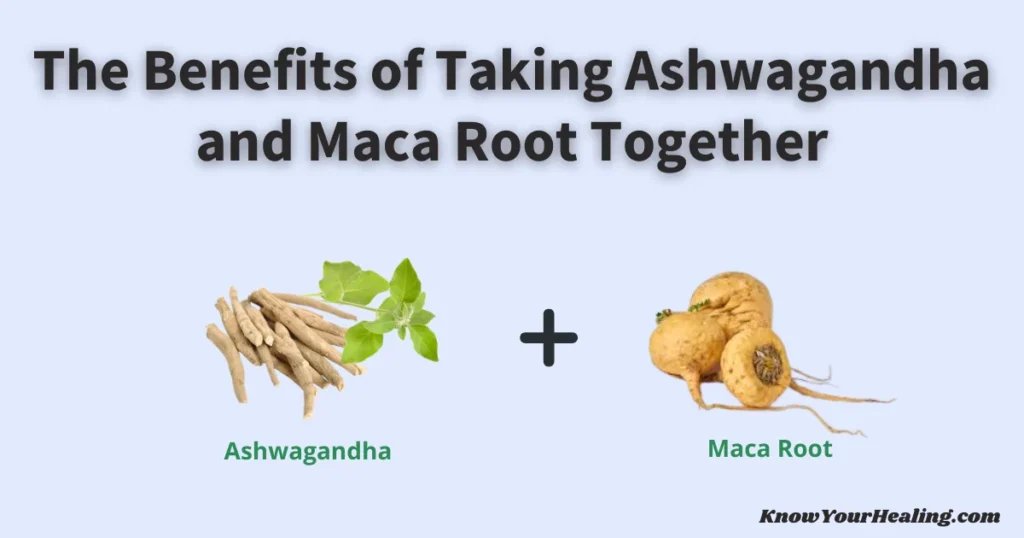How long does kava last? For those exploring this natural relaxant, knowing the duration of its effects is important.
A moderate dose of kava typically lasts around 2 to 4 hours.
For individuals curious about different effects, the euphoria and relaxation can vary. The euphoric sensations often remain for about 1 to 3 hours.
For a deeper understanding of what to expect, including how long it remains in your system, this guide provides valuable insights and practical advice.
Understanding How Long Kava Lasts in the Body

Various factors, including the type of kava consumed and individual body characteristics, influence the duration of kava’s effects.
Immediate effects tend to vary, with some users experiencing relaxing effects, while others may have stronger, more sedative responses.
Factors Influencing Kava’s Duration
A key factor affecting the duration of kava’s effects is the type of kava consumed.
Noble kava, commonly used in traditional ceremonies, tends to have a shorter duration compared to its counterpart, tudei kava, which is known for longer-lasting effects.
The method of preparation, such as using kava tea or kava extracts, also plays a crucial role in its longevity.
Body weight and metabolism significantly impact the duration of kava’s effects. Individuals with a slower metabolism may find that the kava experience lasts longer.
Using kava products on an empty stomach can also lead to more pronounced effects, as the body absorbs the active compounds more rapidly.
The amount of kavalactones—the active ingredients in kava—consumed influences how long it stays in the system.
Higher doses generally result in more extended effects, which may be desirable for those looking to manage anxiety disorders or seeking muscle relaxation.
Immediate Effects of Kava Consumption
Kava consumption often results in immediate effects such as mild euphoria and a notable sense of relaxation, which usually peak within two hours.
These effects can last anywhere from 2 to 4 hours for most users, and sometimes longer in individuals who regularly use kava.
The calming effects stem from kava’s interaction with the central nervous system, providing relief without the adverse effects associated with some prescription medications.
The duration of its effects may vary depending on the type of kava root used and individual factors, such as body weight and tolerance.
While kava bars have become increasingly popular in the United States for social gatherings in recent years, users should be aware of the potential risks associated with this practice.
Liver damage and liver toxicity are concerns with long-term kava use. Medical advice is recommended for those with liver disease or taking kava in large quantities.
Long-Term Use and Health Implications

Long-term kava use is associated with various health risks and side effects. Regular consumption, especially in large quantities, can affect liver health and induce other adverse effects.
Potential Risks of Long-Term Kava Use
Long-term kava use might lead to liver damage. Studies indicate that frequent consumption could result in liver toxicity, increasing the risk of liver disease over time.
It’s crucial to monitor liver enzymes for individuals who consume kava regularly.
Kava’s active compounds, primarily kavalactones, play a significant role in these risks.
High doses or prolonged use may increase the risk of damage.
Anyone with a history of liver disease should consult a healthcare provider before engaging in consistent kava consumption.
Safety and Side Effects of Kava
Kava can have sedative effects, contributing to muscle relaxation and calming properties. However, such side effects may also include dizziness, dry skin, or visual disturbances in some users.
Kava products, including kava powder and kava tea, are widely available, and various factors, such as the preparation method or active ingredients, can influence their side effects.
Also, chronic use may lead to weight loss and a heightened risk of adverse effects like apathy or cognitive function impairments in some individuals.
Kava should be consumed with caution, and individuals with existing medical conditions or those taking other medications should consult a healthcare professional about potential interactions.
Different Types of Kava and Their Effects

Kava’s effects can vary based on the type of kava being consumed. Noble Kava and Tudei Kava are two main types, each with different kavalactone levels and effects.
Additionally, the way kava products are prepared and consumed can significantly impact the duration and intensity of their effects.
Noble Kava vs. Tudei Kava
Comparison table between Noble Kava and Tudei Kava:
| Feature | Noble Kava | Tudei Kava |
|---|---|---|
| Origin | South Pacific Islands; used in traditional ceremonies | Grows in the Pacific, less favored in traditional use |
| Main Use | Most commonly consumed; daily use | Rarely consumed; not recommended for regular use |
| Effects | Relaxing, calming, mood-enhancing | More intense, sedating, can last longer |
| Duration | 2–6 hours | Can last up to 48 hours (“two-day” effect) |
| Kavalactone Content | Lower, with a favorable profile | More intense, sedating, and can last longer |
| Side Effects | Fewer adverse effects; low risk of nausea or headaches | More likely to cause nausea, headaches, and prolonged sedation |
| Liver Safety | Lower risk of liver toxicity | Higher risk of liver toxicity; safety concerns |
| Legal/Regulatory | Widely accepted and legal | Banned or discouraged in many regions |
Noble Kava is generally preferred for its safety and pleasant effects, while Tudei Kava is avoided due to its intensity, lingering effects, and potential health risks, including liver toxicity and unwanted side effects like nausea and headaches.
Kava Products and Their Preparation
Kava products are available in various forms, including kava powder, capsules, extracts, and teas. The preparation method can influence how long kava lasts in the body.
For instance, kava tea is made by straining kava root powder with water or coconut milk for its calming effects. It is often consumed in social gatherings or kava bars.
Kava extracts and capsules are convenient options for those who want to avoid the traditional preparation method.
They usually contain a standardized amount of kavalactones, ensuring a consistent kava experience.
The effects of these forms can vary, with kava capsules typically reaching their peak within two hours of consumption and lasting for a few hours.
Proper storage of kava products in airtight containers is essential to maintain their potency.
Some individuals may experience reverse tolerance, where kava’s effects become more pronounced with repeated use.
Consulting a healthcare provider is recommended if one plans to incorporate kava into their lifestyle, especially for those with liver conditions or who are taking prescription medications.
Enhancing Your Kava Experience

To maximize the kava experience, focus on best practices for consumption and maintaining quality by storing it properly.
These steps can improve the effects of kava and ensure a more enjoyable and beneficial outcome.
Best Practices for Kava Consumption
Kava consumption plays a crucial role in determining the duration of kava’s effects and its overall impact.
Consuming kava on an empty stomach can often enhance its calming effects, as food can slow down the absorption of the active ingredients.
Many seasoned kava drinkers recommend traditional preparation methods, such as mixing kava powder with warm water or coconut milk, to fully release the active compounds, kavalactones.
Monitoring the dosage is important, especially for those new to kava.
Starting with smaller amounts allows individuals to gauge their tolerance, gradually increasing the dose to avoid adverse effects, such as liver damage.
Consulting a healthcare provider before starting kava, especially for those with existing medical conditions, can help mitigate potential risks.
Social settings, such as kava bars or traditional ceremonies, are often the best places to consume kava.
These environments provide a context for understanding the cultural significance of kava and encourage a relaxed experience, further enhancing its effects.
Proper Storage and Quality Assurance
Proper storage plays a significant role in preserving the quality and effects of kava.
Airtight containers are essential for keeping moisture out and maintaining freshness, while a cool, dark place can help prevent degradation of active ingredients.
When sourcing kava products, ensuring they come from reputable suppliers in the South Pacific Islands guarantees a focus on quality.
Noble kava, for instance, is known for its desirable effects and reduced risk of liver toxicity compared to other types, such as tudei kava.
Regularly checking the product label for information about the amount of kavalactones and the type of kava used offers insight into its potency.
This helps in making informed decisions, thereby improving the kava experience and reducing the risk of consuming large quantities that could cause unwanted effects.
Kava and Mental Health

Kava, a plant native to the South Pacific, has been used for its calming effects. While kava products may offer benefits for anxiety disorders, potential risks like liver toxicity should not be ignored.
Benefits for Anxiety Disorders
Kava is often explored for its potential to alleviate anxiety disorders. The active ingredients, known as kavalactones, are believed to have sedative effects that help reduce anxiety.
Studies indicate that kava extracts might be effective in easing symptoms of general anxiety without the sedative hangover that some prescription medications cause.
Some people find that when kava is used in moderate doses, its calming effects can be beneficial without significant side effects.
Kava’s ability to promote muscle relaxation and mood enhancement makes it a popular natural option.
In recent years, more clinical trials have focused on its psychoactive properties to determine its precise mechanisms and benefits.
Nonetheless, healthcare providers often recommend kava as a short-term solution until more conclusive data is available.
Potential Risks and Considerations
Though kava may seem like a promising option, there are significant risks to consider.
Long-term kava use has been associated with liver damage, especially when consumed in higher doses or its more potent forms like tudei kava.
Some users experience adverse effects such as digestive issues, skin changes, and, in rare cases, liver failure.
These serious complications highlight the importance of talking to a healthcare professional before starting kava supplements.
Kava’s effects vary depending on factors such as body weight and the method of preparation.
Consuming kava on an empty stomach can enhance its effects, leading to stronger reactions than expected.
In the United States, kava bars have become popular social gathering spots; however, it’s crucial to ensure that the kava consumed is from reputable sources to avoid contamination or incorrect dosages.
Adhering to proper storage in airtight containers is also crucial for maintaining the effectiveness and safety of the product.
Traditional and Modern Uses of Kava

The traditional and modern uses of kava reflect its cultural significance and evolving applications.
While traditional uses focus on its social and ceremonial importance, modern trends emphasize its role in promoting wellness and relaxation.
Traditional Ceremonies and Social Gatherings
Kava has a deep-rooted history in the South Pacific islands, where it plays a significant role in traditional ceremonies and social gatherings. Pacific islanders use kava as a traditional beverage made from the root of the kava plant, known for its calming effects.
These ceremonies are an essential part of the community, fostering social bonds and cultural heritage. The preparation method typically involves grinding the kava root and mixing it with water to create a drink that offers muscle relaxation and sedative effects.
Consumed in a communal setting, kava helps promote unity and relaxation among participants.
Traditional kava sessions can last several hours, with their effects contributing to a sense of well-being and cognitive function.
Modern Uses and Trends
In recent years, kava has gained popularity beyond its traditional roots as more people explore its potential benefits for wellness and relaxation.
Modern uses often focus on its ability to reduce anxiety disorders and improve sleep quality.
Kava products, including kava capsules, kava tea, and kava extracts, have gained popularity as natural dietary supplements.
Many people consume kava in kava bars, which have emerged in places like the United States, offering a social atmosphere that is alcohol-free.
The effects of kava, such as relaxing effects and a mild euphoric experience, make it appealing for those seeking an alternative to traditional prescription medications.
Despite its popularity, users should be aware of potential risks like liver damage and consult a healthcare professional for medical advice before using kava extensively.
Final Thoughts
How long kava lasts can vary based on several factors. Generally, a moderate dose might have effects lasting for 2 to 4 hours. However, for frequent users, these effects can be more prolonged.
It’s essential to consider factors such as the amount of kava consumed and the user’s tolerance.
Kava’s effects can be felt differently depending on whether it’s used for relaxation or its euphoric properties.
The euphoric effects typically last 1 to 3 hours. Meanwhile, the calming effects can extend beyond that timeframe due to kavalactones, which are the active compounds in kava.
As kava users reflect on this information, it’s crucial to consider safety and legal guidelines, particularly in places with restrictions.
Consuming kava responsibly can help prevent potential health issues, such as malnutrition or weight loss, associated with long-term use.
Key Takeaways:
- Moderate Dose Duration: Effects last about 2-4 hours.
- Euphoric Effects: Typically felt for 1-3 hours.
- Calming Effects: May last longer than the euphoric ones.
- Kava Safety: Important to follow guidelines to reduce health risks.
Considering how kava fits into one’s lifestyle can help determine its use to ensure a safe and enjoyable experience.
Frequently Asked Questions
Kava can have varying effects depending on the dosage and frequency of use. It is known for relaxing the muscles and promoting feelings of well-being. Users often wonder about how long these effects last and what kava’s impact is compared to other substances.
How long does it take kava to get out of your system?
Kava’s effects typically last several hours, but it can stay in the system for over 24 hours. The time it takes to fully clear from the body can vary depending on factors such as metabolism and the amount consumed.
Does kava make you tired the next day?
Kava can lead to sleepiness and feelings of relaxation, which may linger the next day, especially if taken in larger amounts or just before bedtime. This residual effect is generally mild and may be more noticeable in new users.
Does kava give you a buzz?
Kava is known for its euphoric and uplifting effects, often described as a “buzz.” These effects can last 1-3 hours, depending on the dosage and individual tolerance levels.
Is kava harder on the liver than alcohol?
Kava has been associated with liver damage, especially with long-term use or when mixed with other substances. While it is crucial to use kava responsibly, alcohol consumption is commonly seen as more harmful to the liver, with moderate use of kava considered relatively safer.
Are the effects of kava noticeable?
The effects of kava can be noticeable after consumption.
Users typically experience relaxation and a sense of well-being, which can vary in intensity. Lower doses might produce subtle effects, while higher doses enhance these sensations.
Can you overdo kava?
Yes, consuming excessive kava can lead to adverse effects like dizziness, nausea, and prolonged drowsiness.
It’s important to follow recommended doses and be mindful of individual tolerance levels to prevent overconsumption.
Does kava boost dopamine?
Kava doesn’t directly boost dopamine but may influence neurotransmitter activity, contributing to its relaxing and mood-enhancing properties. Further research is needed to understand the effects of kava on brain chemistry fully.
What’s the difference between kava and kratom?
While both kava and kratom come from plants and have sedative effects, they are different substances. Kava is often used for relaxation and stress relief, whereas kratom can act as both a stimulant and a sedative, depending on the dose.
How much kava is needed to feel euphoria?
The amount of kava needed to feel euphoric effects varies with individual tolerance.
Generally, a moderate dose is enough to achieve euphoria for most people, lasting 2 to 4 hours for moderate users, according to experts.
Does kava show up on a breath test?
Standard breath tests do not detect Kava. These tests are designed to measure blood alcohol concentration, so they do not indicate kava’s effects or presence in the system.




